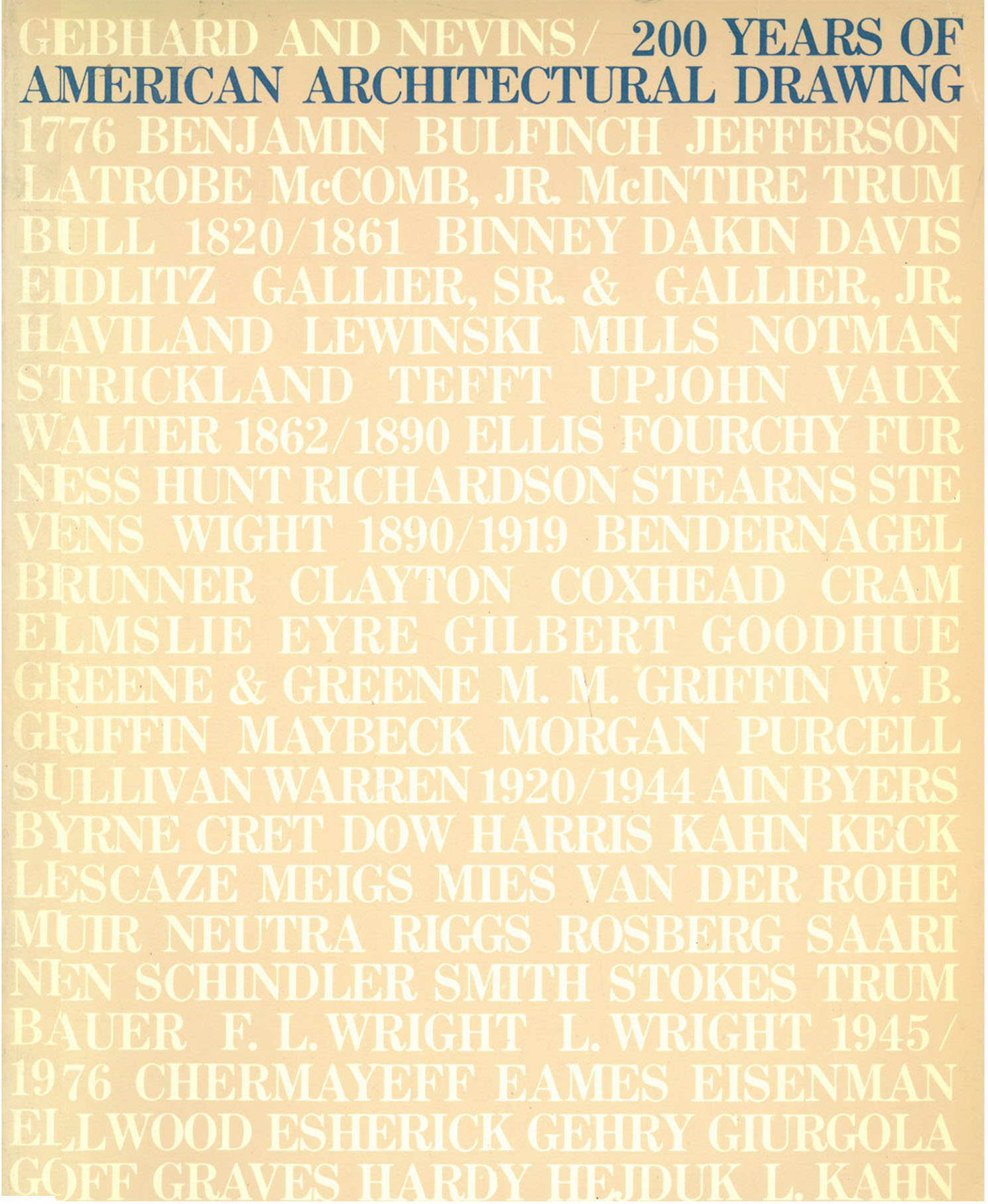
“Never before has America’s rich heritage of architectural drawing been published in book form. Here, for the first time 200 years of work by 85 distinguished American architects is fully illustrated and appraised. A virtual archive of architectural drawing, this volume is required reading for all design professionals and laypeople interested in architectural history.
The book is organized into two sections: the first is an introductory essay by the well-known art historian David Gebhard, and the second is the drawings themselves, which are thoroughly discussed by Deborah Nevins within six chronological periods. Gebhard describes the range of architectural drawings—sketches, formalized presentation sketches, formal presentation drawings (plans, perspective exterior and interior drawings), working or contract drawings, and drawings for publication. Then he analyzes drawings for buildings as a reflection of the changing modes of the actual practice of architecture. From there he defines the use of drawings as: a means of transforming the abstract concept into the real object, of selling the building to the client, of establishing a reputation for the individual architect or the practice of architecture as a profession, of revealing a theoretical concept, and of being an end in themselves. Finally Gebhard relates architectural drawings to “high art” within the framework of 19th- and 20th-century art history.”
Text excerpted from book’s dust jacket.
Support
The book and exhibit were supported by the National Endowment for the Arts, the New York State Council on the Arts, and the Graham Foundation for Advanced Studies in the Fine Arts.
Explore
John Hejduk
John Hejduk's (1929-2000) highly theoretical work is demonstrated in his isometric projection drawings that deal with the organization of shape and volume.
Michael Graves
Michael Graves, an architect and painter, explores architectonic principles and the symbolic meanings of architectural elements, such as doors and windows, in his work.
Richard Meier
Richard Meier considers the duality of public and private space, evident in his dramatic drawings that articulate types of enclosure.
